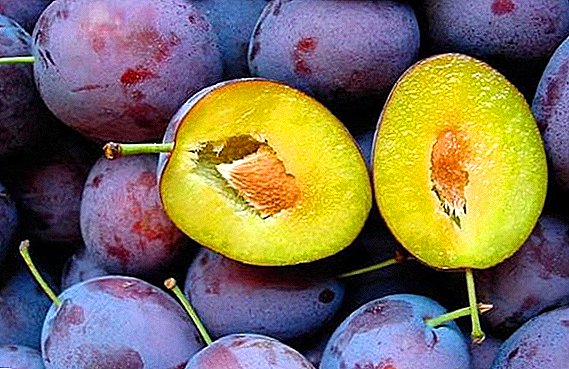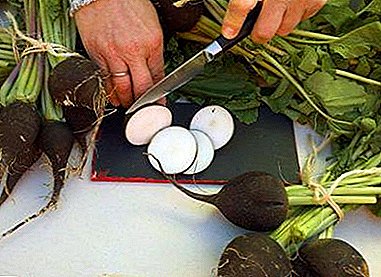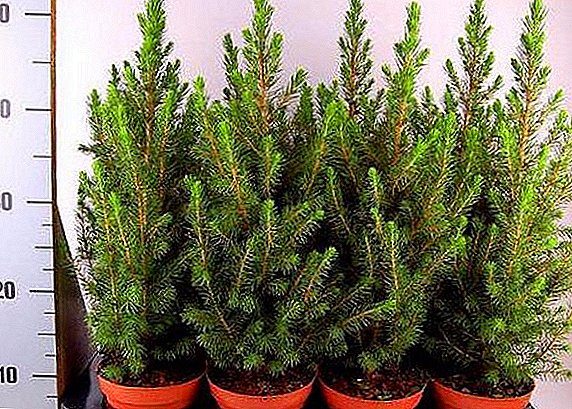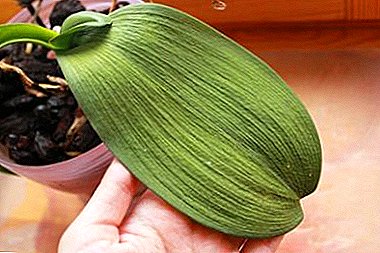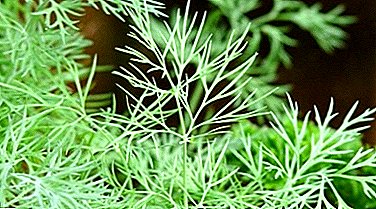
Dill is considered one of the most popular seasonings, which can not always be found on the shelves in fresh form.
To provide yourself and your family with this spicy crop throughout the year, you can grow dill on the windowsill of your house.
Before you start sowing culture, you should familiarize yourself with the nuances of this process. It is about him that we will describe in more detail later in the article.
Pros and cons of growing green house in the apartment

The indisputable advantage of growing dill on the windowsill is the opportunity to feast on this spicy crop for a long time. At the same time plants are always at home at hand. The process of cultivation at home does not depend on weather conditions and time of yearIt is possible to create the desired climate by yourself.
As for the shortcomings, the culture requires some care, especially in the winter. It will be necessary to create conditions of good illumination with fluorescent lamps. For the rest, it is easy to grow dill using the recommendations below.
Which varieties are best to sow?
The following varieties of varieties are distinguished:
- early maturing
- mid-season;
- late
Varieties of early species in a short time form a green mass and quickly give peduncles. The foliage of such plants does not grow lush, which is why you should not grow such varieties of dill at home. They will quickly begin to form seeds.
Is it possible to sow late varieties of dill and how long will they ripen? As for late-ripening varieties, this is an ideal option for planting in a pot at home. The culture of the late varieties does not have time to ripen over the summer and gives a good green mass for a long time.
The list of late ripening varieties, which should be preferred for sowing seeds in the pot at home:
- Amazon;
- Alligator;
- Dill;
- Buyan;
- Salute.
On the recommendation of amateur gardeners who grow such seasoning at home, you can choose an early ripe variety that will suit:
- Grenadier;
- Gribovsky;
- Kibray;
- or mid-season Richelieu.
How to plant?
 Sowing seeds in a pot involves several preparatory activities.
Sowing seeds in a pot involves several preparatory activities.
Before sowing will require:
- decide on the capacity for the plant;
- purchase or prepare the ground;
- decide on a place for a spicy plant;
- prepare seed.
Each of the stages of preparation requires compliance with certain conditions and recommendations.
Pot
Suitable for sowing dill flower pots up to 2 liters. If you plan to sow a large number of plants, you can use ordinary wood boxes. It is important that special drainage holes are made in the selected container. It is required to select a suitable container for the container.
There are no special requirements for a dill pot. The only thing that is worth focusing on is the convenience of placing plants on the windowsill. It can be used for sowing seeds of peat pots, and then transferred into a pot for further cultivation.
Priming
Be sure to provide a drainage layer of 2 cm at the bottom of the selected container or flower pot. To do this, use the usual clay. If it is not possible to use expanded clay, then ordinary sand will do.
If you do not want to prepare the soil yourself, you can buy ready-made in the store and mix it in a 1: 1 ratio with garden soil or use purchased soil in its pure form. Preparing the soil yourself, you need to mix garden soil, peat, humus and universal soil in equal quantities.
Window selection
Dill is considered to be the culture of a long daylight, so it is recommended to choose the brightest window for plant growth. It is better to have pots with cultivated spice on the southeast or south side of the house. It is not prohibited to grow dill in the room, but additional measures will be required to compensate for the lack of light. In any case, it is important to choose the lightest place for the plant.
Seed preparation
 It is recommended to prepare seed before sowing.. Preparatory activities are as follows:
It is recommended to prepare seed before sowing.. Preparatory activities are as follows:
- The required amount of seed is placed in a gauze cut of fabric or bandage and immersed in warm water for 1-2 days.
- A solution of potassium permanganate solution is prepared and the seeds are immersed for 15–20 minutes in a liquid, and then washed with water.
- Additionally, you can carry out the treatment of seed and use a growth stimulator, for example, Appin. Dilute the product according to the instructions and leave the seeds in the solution for 3-4 hours.
Then you can immediately sow dill in a flower pot or other container in which it will grow on the windowsill of the house.
March-August is considered to be the most suitable time for sowing dill, however, given that at home the temperature in general is always constant and subject to adjustment, it is possible to sow the seeds at any convenient time. The only thing worth considering is the possibility of creating optimal conditions for the growth of culture.
Step-by-step landing procedure
Sowing of seeds is carried out in accordance with the following algorithm of actions: Prepared soil is poured into the selected container and watered abundantly with water, but do not allow overmoistening of the soil.
- If the container is long and allows to sow several plants, then grooves are made in it, up to 1 cm deep.
- Place the seeds in such a way that the distance between them is kept 10-15 cm. If the dill is grown in a separate pot, then 1-2 seeds are enough for one container.
- After the seeds are distributed in the soil, they are covered with a small amount of soil and covered with foil. Leave the pots in a warm, lighted place.
- After the first sprouts appear (about 11-14 days of sowing), the film is removed and the pots are placed in a permanent place of growth.
How much is growing at home?
If the culture is provided with proper care, the required amount of light and heat, then the first foliage can be cut off already after 1.5 months.
How to care?

Caring for a plant, you will need to perform the following activities:
- Watering the soil. You need to water the plant, focusing on the condition of the soil. Watering should be carried out after almost complete drying of the soil. In no case should not over-wetting the soil, as well as its complete drying.
- Top dressing. Conduct fertilizer once every 6 weeks. At the same time, the amount of fertilizer is the same throughout the crop growth. Used for fertilizing mineral fertilizers intended for vegetable crops. It is necessary to plant them in accordance with the instructions of the acquired funds.
- Temperature for dill should not exceed 20 degrees. If the temperature regime exceeds the specified, then you need to take care of the maximum increase in daylight hours and spray the plants with water daily.
Additionally, you need to periodically turn the pot 180 degrees. You can do this daily. Such an event will allow the plant to stretch to the top, rather than grow towards the light. As for additional lighting, it is required only in the winter period.
Features of winter care
Additional lighting is required in winter. in the process of growing culture. Install the lamp at a height of 60 cm above the culture. If dill is grown on a windowsill, the light for the plant should be turned on for 5 hours If dill grows directly in the room, then additional lighting is required over a 15-hour period.
Harvesting
It is necessary to harvest the spicy crop by thinning it so that 5 cm remains between the plants. With the passage of time and further harvesting, the distance between the plants should reach 10 cm (if the culture has risen without compliance with the technology). If dill is located initially at a distance of 10-15 cm, then you need to harvest the crop, cutting off the twigs from the plant. Harvesting is carried out as the plant grows.
Dill grows fast enough, especially if you follow the cultivation technology and provide the culture with decent care. As the plant grows and harvests, new seeds can be sown, thus ensuring the growth of dill throughout the year.


